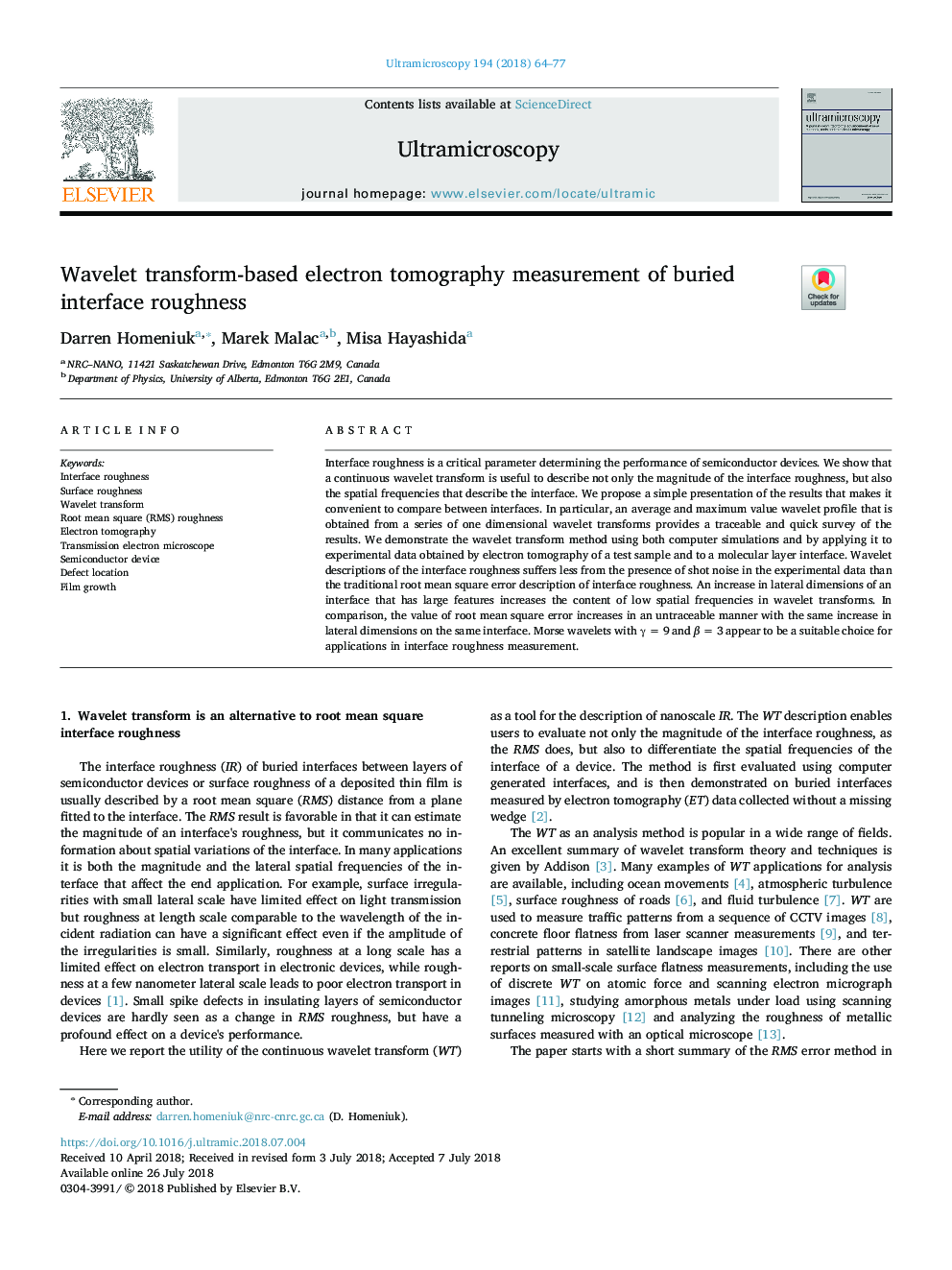| Article ID | Journal | Published Year | Pages | File Type |
|---|---|---|---|---|
| 8037610 | Ultramicroscopy | 2018 | 14 Pages |
Abstract
Interface roughness is a critical parameter determining the performance of semiconductor devices. We show that a continuous wavelet transform is useful to describe not only the magnitude of the interface roughness, but also the spatial frequencies that describe the interface. We propose a simple presentation of the results that makes it convenient to compare between interfaces. In particular, an average and maximum value wavelet profile that is obtained from a series of one dimensional wavelet transforms provides a traceable and quick survey of the results. We demonstrate the wavelet transform method using both computer simulations and by applying it to experimental data obtained by electron tomography of a test sample and to a molecular layer interface. Wavelet descriptions of the interface roughness suffers less from the presence of shot noise in the experimental data than the traditional root mean square error description of interface roughness. An increase in lateral dimensions of an interface that has large features increases the content of low spatial frequencies in wavelet transforms. In comparison, the value of root mean square error increases in an untraceable manner with the same increase in lateral dimensions on the same interface. Morse wavelets with γ = 9 and β = 3 appear to be a suitable choice for applications in interface roughness measurement.
Keywords
Related Topics
Physical Sciences and Engineering
Materials Science
Nanotechnology
Authors
Darren Homeniuk, Marek Malac, Misa Hayashida,
